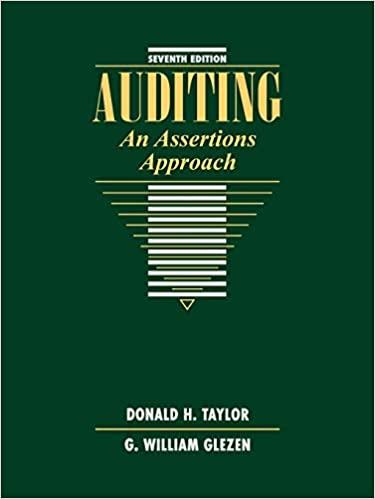For a number of years, the Keep Company had used a computer batch processing system for its
Question:
For a number of years, the Keep Company had used a computer batch processing system for its credit sales transactions. As clerks made credit sales, a copy of the sales invoice was given to the customer and another copy was placed in the register drawer. At the end of each day, these sales invoice copies were batched by a control group. The data on the invoices were keyed into a transactions file. As the keying took place, an edit program checked data for certain error conditions and calculated batch totals. The control group compared the computer-generated batch totals with their own and made sure that rejected data were rekeyed. The file updating was performed in a manner similar to that shown in the systems flowchart in this chapter. The system seemed to work well and there were few complaints from customers.
However, Ms. Change, a new employee who worked in the computer department, suggested that an online system be installed. She contended that the batch processing system was too slow and inefficient. Under her suggested system, a terminal would be located in each department that sold merchandise. As a credit sale was made, the clerk would key the transaction at the terminal and the data would update the customer's account, which would be maintained on magnetic disk files. A sales invoice would be prepared and a copy given to the customer; but nothing would be done with the store's copy, except to place it in a file.
Mr. Keep, the owner, decided to follow Ms. Change's suggestion. The change was made, and for a short time everything seemed to work well.
Several months later, numerous customers began to complain of erroneous account balances. Some customers said that all items they purchased had not been charged to them. Other customers claimed that incorrect charges had been made to their accounts.
In an attempt to correct the problems, the controller tried to reconstruct all sales transactions made since the new system was installed. He discovered that all sales invoice copies had been thrown away and no separate computer record of the sales transactions had been made.
When the independent auditor (who had not been told of the change) obtained an understanding of internal control, she assessed control risk at maximum. An unusually large number of substantive tests were performed, including 100 percent confirmation of all accounts receivable balances. The auditor also wrote a long letter to the owner describing several reportable conditions and suggesting numerous controls for the new system.
Required:
a. Describe how this situation could have occurred (what improper functions were performed or what proper functions were not performed).
b. What controls were probably suggested by the auditor? Give reasons for each suggested control.
Step by Step Answer:

Auditing An Assertions Approach
ISBN: 9780471134213
7th Edition
Authors: G. William Glezen, Donald H. Taylor





